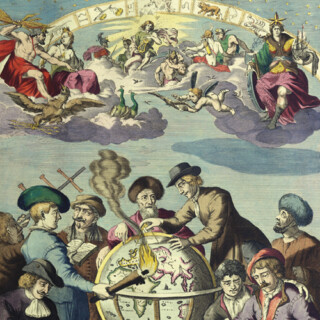The Sea of Marmara
from surveys by Captn Manganari Russian Navy 1845, 48 and Captain Spratt and other Officers of the R.N.
London,
The Admiralty,
1859. Corrections to 1873. Minor corrections to 1877.
Engraved chart, 14 inset views, a few tears to lower margin and image skilfully repaired, some loss to imprint, reapired, old gule marks to verso.
650 by 1005mm (25.5 by 39.5 inches).
14359
notes:
This rare chart of the Sea of Marmara was made at a critical time in the region's history. The Sea of Marmara, the Black Sea, and the Bosporus and Dardanelles straits are of central importance for the governance of Istanbul, and so the conflicts of the Ottoman Empire often rested on a detailed understanding of the waters. In the 1840s, joint Ottoman and Russian forces launched an expedition under Captain Manganari to complete the first systematical survey of the Black Sea u...
bibliography:
NMM G236:2/9
provenance:








